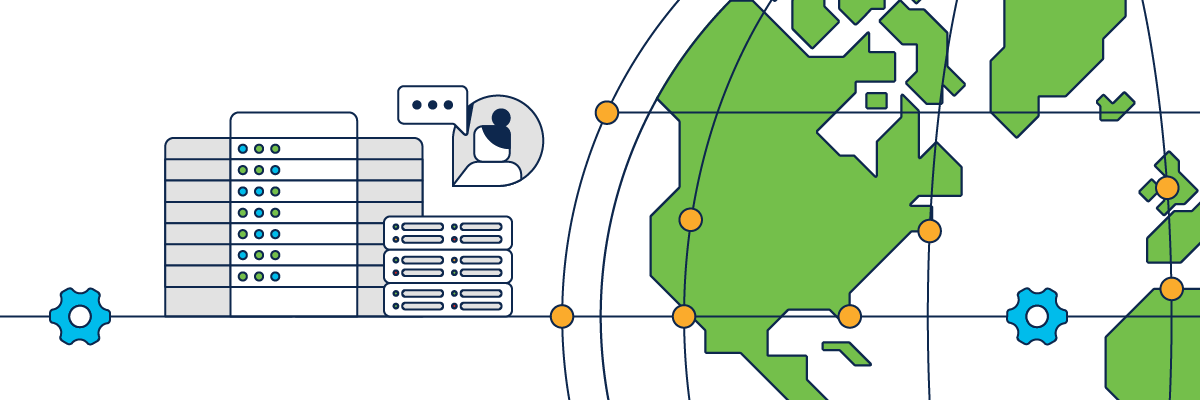- Why I recommend this OnePlus phone over the S25 Ultra - especially at this new low price
- I replaced my laptop with Microsoft's 12-inch Surface Pro for weeks - here's my buying advice now
- This palm recognition smart lock doubles as a video doorbell (and has no monthly fees)
- Samsung is giving these Galaxy phones a big One UI upgrade - here's which models qualify
- 7 MagSafe accessories that I recommend every iPhone user should have
Harnessing Network and Application Performance Insights for Effective Automation

Reliance on network and application automation has grown over the years as equipment, software, and systems are becoming increasingly intelligent—and therefore more capable. In fact, the network automation market is expected to grow by 3 percent between 2022 and 2030, according to Grand View Research. Much of this growth can be attributed to the persistent rise in network complexity as demand for agility and reliability increases.
Automation can help streamline processes, boost productivity, and make insight-driven decisions. Yet, according to Gartner, “more than 65% of enterprise networking activities are performed manually.” While increased complexity is driving the need for automation, this same complexity can also make it challenging to implement.
Automation requires intelligent systems and seamless integration into many parts of the digital ecosystem, such as hardware, software, WAN, LAN, software as a service (SaaS), platform as a service (PaaS), and more. Using automation to ensure networking activities run optimally requires real-time insight into network and application performance. Here are four factors to ensure you’re delivering the best automation strategy for your organization.
Network and application performance insights in automation execution
Network and application performance directly impacts the overall efficiency and effectiveness of automation. Having the right information at the right time and being able to act on that information are essential elements of process improvements. But an automation engine can only make decisions based on the data it can access. When organizations require insights that fall outside of seamless access to data, they often must rely on time-consuming and sometimes unreliable manual analysis and correlation.
To avoid manual intervention, organizations can leverage a single system that has a pervasive and granular view of application and network performance across an entire digital ecosystem. The system can analyze relevant data and correlate it to find the true root cause within microseconds. This enables real-time responses that can lessen or even avert network issues and degradation.
Leveraging performance monitoring for optimal automation execution
Real-time performance monitoring tools across both the network and applications are critical in capturing crucial data for automation processes. These tools identify bottlenecks, optimize resource allocation, and enhance automation workflows specific to both network and application performance.
For example, mobile navigation apps utilize real-time data of road conditions and traffic congestion to provide updated directions to drivers on-the-go. The apps analyze the speed of vehicles (analogous to packets) ahead of the driver, detect backups (congestion), and recognize slow traffic (latency)—while considering the driver’s final destination. The apps then use this information to avoid potential problems and reroute the driver to the ideal path.
This seamless adjustment of directions is made possible through automation. The network path is identified, and a recommendation is made. The coordination between network and application is what leads to the best outcome. Comprehensive performance data that encompasses both the network and the applications that run on it is essential for successful automation execution.
Proactive troubleshooting and issue resolution through performance insights
One fundamental advantage of automation is the ability to address problems before they arise. Network and application performance insights play a crucial role in proactive troubleshooting, early issue detection, and timely resolution. However, achieving these benefits requires obtaining valid and actionable insights that cover the entire digital ecosystem. Through automation, networks and systems can proactively implement changes even before the problem becomes apparent to an end user. By leveraging this visibility and analyzing historical data, predictions can be made to anticipate potential issues. These predictions are then fed into the automation engine, enabling it to execute actions based on valuable data insights.
Continuous improvement and optimization with performance data analytics
Performance insights allow organizations to make informed decisions, implement iterative improvements, and foster continuous enhancements in automation execution. By utilizing network and application performance management (NAPM) systems, automation enables the ongoing enhancement of the end-user experience. It facilitates the system’s ability to continually refine its operations, leading to optimized outcomes. Moreover, thanks to automation’s real-time adaptability, these improvements can be implemented at a much faster pace compared to human intervention.
If an organization relies solely on network data, it may overlook the nature of the data being transferred and miss indications of business-critical application degradations and outages. Conversely, solely focusing on application data might lead to overlooking network congestion points that are contributing to the issue. Achieving visibility from layer 7 (application layer) down to layer 2 (data link layer) is critical to gaining a holistic understanding of the underlying reasons for issues impacting the end-user experience.
Minimize manual intervention
Ultimately, what matters to users is the experience they have with the systems and applications being used; the intricate details of the underlying processes are irrelevant if the experience is seamless and satisfactory. To deliver the best user experience, it’s imperative to minimize manual intervention and enable the system to perform its intended functions in a near-zero-touch deployment. By removing manual bottlenecks, systems can operate at their optimal capacity, delivering the desired outcomes efficiently.
Learn more about the
Accedian and Cisco
Crosswork Network Automation
joint solution
Share:

